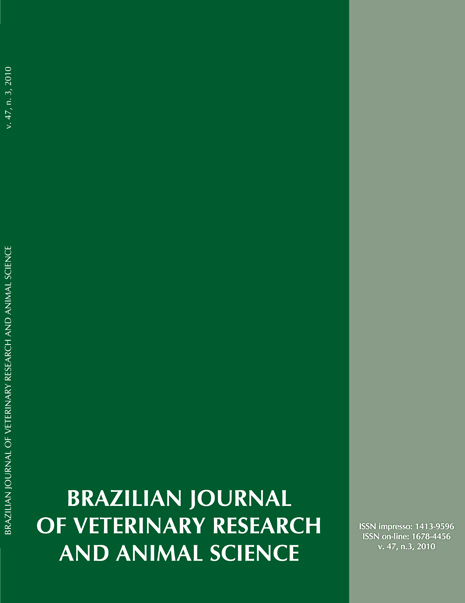Bivalve molluscs prospection in pollution study from Cachoeira and Santana rivers in Ilheus, Bahia, Brazil
DOI:
https://doi.org/10.11606/issn.1678-4456.bjvras.2010.26854Keywords:
Quality of water, Bivalve molluscs, Pollution, Thermtolerant coliforms, Pathogenic enterobacteriaAbstract
A survey about the pollution level of the Cachoeira and Santana Rivers (Ilheus, Bahia, Brazil) was performed for a quarter, through the assessment of the microbiological quality of water and seafood (Crassostrea rhizophorae - oyster and Tagelus plebeius - razor clam) extracted from these rivers. Traditional indicators of pollution such as total coliforms (Ct) and thermtolerant coliforms (CT), and total count of micro-organisms, with isolation and identification of Enterobacteriaceae were determined in rivers samples, which exhibited different levels of faecal pollution. An amount of 68 micro-organisms was isolated, distributed in ten species, among them, Salmonella typhi, Escherichia coli and Shigella sp., warning about the risk of consuming these shellfish in nature, even when there is accordance with the laws established for CT. The bivalve prospection to monitor pollution levels was not effective considering CT detection in oysters and moapens. There was also the highest contamination degree in the Cachoeira River, which is used for water distribution in the region and as livelihood source through extractive activities for the riverside population.Downloads
Download data is not yet available.
Downloads
Published
2010-06-01
Issue
Section
UNDEFINIED
License
The journal content is authorized under the Creative Commons BY-NC-SA license (summary of the license: https://
How to Cite
1.
Sande D, Melo TA, Oliveira GSA, Barreto L, Talbot T, Boehs G, et al. Bivalve molluscs prospection in pollution study from Cachoeira and Santana rivers in Ilheus, Bahia, Brazil. Braz. J. Vet. Res. Anim. Sci. [Internet]. 2010 Jun. 1 [cited 2024 Apr. 17];47(3):190-6. Available from: https://revistas.usp.br/bjvras/article/view/26854





